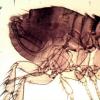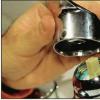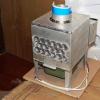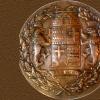All about antibiotics pharmacology. Modern classification of antibiotics. Is it possible to use antibiotics with preventive purpose
The antibiotic is the substance "against life" - a drug that is used to treat diseases caused by alive agents, as a rule, by various pathogenic bacteria.
Antibiotics are divided into many species and groups on the most different reasons. The classification of antibiotics allows you to most effectively determine the scope of the use of each type of preparation.
1. Depending on the origin.
- Natural (natural).
- Semi-synthetic - on initial stage Production The substance is obtained from natural raw materials, and then continue to artificially synthesize the drug.
- Synthetic.
Strictly speaking, actually antibiotics are only drugs obtained from natural raw materials. All other medicines are called "Antibacterial drugs". In the modern world, the concept of "antibiotic" implies all types of drugs that can fight alive causative agents of the disease.
What do natural antibiotics produce?
- from mold fungi;
- from actinomycetes;
- from bacteria;
- from plants (phytoncides);
- fish and animal fabrics.
2. Depending on the impact.
- Antibacterial.
- Antitumor.
- Antifungal.
3. According to the spectrum of impact on a number of different microorganisms.
- Antibiotics with a narrow spectrum of action.
These drugs are preferred for treatment, since it acts purposefully on a certain type (or group) of microorganisms and do not suppress the patient's healthy microflora. - Antibiotics with a wide range of impact.
4. By the nature of the influence on the bacterium cell.
- Bactericidal preparations - destroy the causative agents of the disease.
- Bacteriostatics - suspend the growth and reproduction of cells. Subsequently, the body's immune system must independently cope with the remaining bacteria.
5. By chemical structure.
For those who study antibiotics, the classification by the chemical structure is determined, since the structure of the drug determines its role in the treatment of various diseases.
1. Beta lactam drugs
1. Penicillin is a substance produced by the colonies of mold mushrooms of Penicillinum. Natural and artificial derivatives of penicillin have a bactericidal effect. The substance destroys the walls of the cells of bacteria, which leads to their death.
The pathogenic bacteria adapt to medicines and become resistant to them. The new generation of penicillins is supplemented with a tazobactam, sulbactam and clavulanic acid that protect the drug from destruction inside the cells of bacteria.
Unfortunately, penicillins are often perceived by the body as an allergen.
Penicillin antibiotics groups:
- Penicillins of natural origin are not protected from penicillos - enzymes that produce modified bacteria and which destroy the antibiotic.
- Semi-synthetic - resistant to the effects of a bacterial enzyme:
Biosynthetic penicillin G - benzylpenicillin;
aminopenicillin (amoxicillin, ampicillin, bakampiteline);
Semi-synthetic penicillin (preparations of meticillin, oxacillin, chloxacillin, dcloxacillin, flukoxacillin).
2. Cephalosporin.
It is used in the treatment of diseases caused by bacteria, resistant to the impact of penicillins.
Today there are 4 generations of cephalosporins.
- Cefalelexin, Cefadroxyl, Charin.
- CefaMesin, Cefuroxime (Axietyl), Cefasalin, Cefaclor.
- Cefotaxim, Ceftriakson, Cefitisadim, Ceftibutene, Cefoperasazon.
- Cefpir, cefepim.
Cephalosporins also cause allergic reactions organism.
Cephalosporins are used in surgical interventions to prevent complications, in the treatment of ENT diseases, gonorrhea and pyelonephritis.
2. Macrolids
Have a bacteriostatic effect - prevent growth and division of bacteria. Macrolides affect directly on the focus of inflammation.
Among modern antibiotics, macrolides are considered the least toxic and give a minimum of allergic reactions.
Macrolids accumulate in the body and are applied short courses 1-3 days. It is used in the treatment of inflammation of internal LOR-organs, lungs and bronchi, infections of the small pelvis organs.
Erythrocin, Roxitromycin, Clarithormicin, Azithromycin, Azaldides and Ketolides.
3. Tetracycline
A group of drugs of natural and artificial origin. Have a bacteriostatic action.
Used tetracyclines in the treatment of severe infections: brucellosis, Siberian ulcers, Tularemia, respiratory organs and urinary tract. The main disadvantage of the drug - bacteria very quickly adapt to it. The most effective tetracycline when local application in the form of ointments.
- Natural tetracyclines: Tetracycline, oxytetracycline.
- Sedentate tetracycles: chloretritis, doxycycline, metacycline.
4. Aminoglycosides
Aminoglycosides belong to bactericidal high-tech drugs active with respect to gram-negative aerobic bacteria.
Aminoglycosides quickly and effectively destroy pathogenic bacteria even with weakened immunite. To start the mechanism for the destruction of bacteria, aerobic conditions are required, that is, antibiotics of this group do not "work" in dead tissues and organs with weak blood circulation (cavity, abscesses).
Aminoglycosides are used in the treatment of the following states: sepsis, peritonitis, furunculosis, endocarditis, pneumonia, bacterial kidney damage, urinary tract infections, inflammation inner ear.
Preparations - Aminoglycosides: Streptomicin, Kanamycin, Amikaqin, Gentamicin, Neoamycin.
5. Levomycetin
The drug with a bacteriostatic mechanism of impact on bacterial causative agents of the disease. It is used to treat serious intestinal infections.
An unpleasant side effect of treatment with Levomycetin is defeat bone marrowat which there is a violation of blood cell production process.
6. Fluoroquinolones
Preparations with a wide range of exposure and powerful bactericidal effect. The mechanism of exposure to the bacterium is to violate the synthesis of DNA, which leads to their death.
Fluoroquinolones are used for local treatment of eyes and ears, due to a strong side effect. Preparations have an impact on joints and bones, contraindicated in the treatment of children and pregnant women.
Fluoroquinolone is used in relation to the following pathogens of diseases: Gonokokk, Schigella, Salmonella, Cholera, Mycoplasma, Chlamydia, Sinygnaya Wand, Legionella, Meningokok, tuberculosis mycobacterium.
Preparations: Levofloxacin, hemifloxacin, sparfloxacine, Moxifloxacin.
7. Glycopeptides.
Antibiotic mixed type effect on bacteria. In relation to most species, it has a bactericidal effect, and in relation to streptococci, enterococci and staphylococci - bacteriostatic impact.
Glycopeptide preparations: Teicoplast (Targocid), Daptomycin, Vancomycin (Vankacin, Dialatcin).
8. Antiberculse antibiotics
Preparations: fatzide, metaside, caululzide, ethionamide, simpleness, isoniazide.
9. Antibiotics with antifungal effect
Destroy the membrane structure of mushroom cells, causing their death.
10. Anti-collect drugs
Used for the treatment of leprosy: Solusulfon, Diucifon, diaphenylsulfone.
11. Antitumor drugs - anthracycline
Doxorubicin, Rub Doc, Carminomycin, Aklaubitsin.
12. Lincoosamida
According to mine medical properties very close to macrolids, although chemical composition - This is a completely different group of antibiotics.
Preparation: Decin S.
13. Antibiotics, which are used in medical practice, but do not apply to any of the known classifications..
Phosphomycin, Fusidin, Rifampicin.
Table of drugs - antibiotics
The classification of antibiotics by groups, the table distributes some types of antibacterial drugs depending on the chemical structure.
| Group of drugs | Preparations | Scope of application | Side effects |
| Penicillin | Penicillin. AMINOPENYCILLIN: ampicillin, amoxicillin, beckhampicillin. Semi-synthetic: methecillin, oxacillin, chloxylin, dyloxacillin, fluklooxacillin. |
Antibiotic with a wide range of impact. | Allergic reactions |
| Cephalosporin | 1 generation: Cephalexin, Cefadroxyl, Zepenin. 2: Cefhamesin, Cefuroxime (Axetil), Cephazolin, Cefaclor. 3: Cefotaxim, Ceftriaxon, Cefitisadim, Cefibutene, Cefoperasazon. 4: Cefpir, cefepim. |
Surgical operations (to prevent complications), ENT diseases, gonorrhea, pyelonephritis. | Allergic reactions |
| Macrolids | Erythromycin, roxitromycin, clarithromycin, azithromycin, azalida and ketolides. | ENT organs, lungs, bronchi, infection of small pelvis organs. | The least toxic, do not cause allergic reactions. |
| Tetracycline | Tetracycline, oxytetracycline, Chlortotrin, doxycycline, metacycline. |
Brucellosis, Siberian ulcers, tularevia, respiratory infections and urinary organs. | Causes rapid addiction |
| Aminoglycosides | Streptomycin, Canamycin, amikacin, gentamicin, neomycin. | Treatment of sepsis, peritonitis, furunculez, endocarditis, pneumonia, bacterial kidney damage, urinary tract infections, inflammation of the inner ear. | High toxicity |
| Fluoroquinolones | Levofloxacin, hemifloxacin, sparfloxacin, moxifloxacin. | Salmonella, Gonokokk, Cholera, Chlamydia, Mycoplasma, Sinneva, Meningokokok, Shigella, Legionella, Tuberculous mycobacterium. | Affect the musculoskeletal system: joints and bones. Contraindicated to children and pregnant women. |
| Levomycetin | Levomycetin | Intestinal infections | Bone marrow damage |
The main classification of antibacterial drugs is carried out depending on their chemical structure.
Antibiotics- A group of compounds of natural origin or their semi-synthetic and synthetic analogues with antimicrobial or antitumor effect.
To date, several hundreds of such substances are known, but only a few of them found use in medicine.
The main classifications of antibiotics
The basis for the classification of antibioticsthere are also several different principles.
By the method of obtaining them:
- on natural;
- synthetic;
- the semi-synthetic (at the initial stage is obtained naturally, then the synthesis lead artificially).
Products of antibiotics:
- most advantage of actinomycetes and mold mushrooms;
- bacteria (polymyxins);
- higher plants (phytoncides);
- animal and fish fabrics (eryitrine, ectericide).
By direction of action:
- antibacterial;
- antifungal;
- antitumor.
According to the spectrum of action - the number of types of microorganisms to which antibiotics act:
- preparations of a wide range of action (cephalosporins of the 3rd generation, macrolides);
- preparations of a narrow spectrum of action (cycloserine, lincomycin, benzylpenicillin, clindamycin). In some cases, it may be preferable because they do not suppress the normal microflora.
Classification for chemical structure
By chemical structureantibiotics share:
- on beta-lactam antibiotics;
- aminoglycosides;
- tetracyclines;
- macrolides;
- lincoosamide;
- glycopeptides;
- polypeptides;
- polyena;
- anthraciklin antibiotics.
The basis of the molecule beta-lactam antibioticsmakes up a beta-lactam ring. These include:
- penicillins ~ A group of natural and semi-synthetic antibiotics, the molecule of which contains 6-aminopenicillanic acid, consisting of 2 rings - thiazolidone and beta-lactam. Among them are distinguished:
Biosynthetic (Penicillin G - benzylpenicillin);
- aminopenicillins (amoxicillin, ampicillin, bakamp-cylin);
Semi-synthetic "antistaphococcal" penicillins (oxacillin, methicillin, chloxacillin, dyloxacillin, fluxacoccillin), the main advantage of which is resistance to microbial beta lactamases, primarily staphylococcal;
- cephalosporins are natural and semi-synthetic antibiotics obtained based on 7-aminocephalosporinic acid and containing cefemic (also beta-lactam) ring,
i.e., according to the structure, they are close to penicillins. They are divided into shiphalosporins:
1st generation - Zefenin, Cefalotin, Cefalexin;
- 2nd generation - Cefazolin (Cefzol), Cefhamesin, Cephaman Dol (Mandol);
- 3rd generation - cefuroxime (Keticef), Cefotaxim (Clasporan), Cefuroxime Axietyl (Zinnat), Cefthaxon (Long-CEF), Ceftazidim (Fortum);
- 4th generation - cefepim, cefpir (cefrom, kateen) et al.;
- mONOBACTAMA - AZTREONES (Azaks, nonbabacles);
- carbopenmes - Meropenem (Merone) and Imphene, used only in combination with a specific inhibitor of renal dehydropptidase with cilastatin - imiphene / cilas-tatin (TIENAM).
Aminoglycosides contain amino-amahar, connected by a glycoous bond with the rest of the (aglicon fragment) of the molecule. These include:
- synthetic aminoglycosides - streptomycin, gentamicin (Garamcin), Canamycin, neomycin, monomocin, syizomycin, tobramycin (thorough);
- semi-synthetic aminoglycosides - spectinomycin, amik-qin (amikin), neutylmicin (neillyn).
The basis of the molecule tetracyclineit is a polyfunctional hydraulic connection with the generic name tetracycline. Among them are:
- natural tetracycles - tetracycline, oxytetracycline (clinimycin);
- semi-synthetic tetracyclines - metacycline, chloretritis, doxycycline (vibramicin), minocycline, rolletethaccline. Group preparations macrolidin its molecule, the Mac-Rocyclic lactone ring associated with one or more carbohydrate residues. These include:
- erythromycin;
- oleandomycin;
- roxitromycin (RULID);
- azithromycin (Sumamed);
- clarithromycin (Clasid);
- spiramycin;
- diritromycin.
TO lincoosamidamthese include Lincomicin and Clindamycin. Pharmacological I. biological properties these antibiotics are very close to macrolides, and, although in a chemical relationship, these are completely different drugs, some medical sources and pharmaceutical firms - Manufacturers of chemicals, such as Daiden C, include lincoosamines to the group of macrolides.
Group preparations glycopeptidein its molecule, contain substituted peptide compounds. These include:
- vancomycin (Vankacin, dialatacin);
- teicoplast (Targocid);
- daptomycin.
Group preparations polypeptidesin its molecule, the remains of the polypeptide compounds are related to them:
- gramicidin;
- polymixins M and B;
- bacitracine;
- kolistin.
Group preparations polishin its molecule, contain several conjugated double ties. These include:
- amphotericin in;
- nystatin;
- lev Room;
- natamicin.
To anthracycline antibioticsrelated antitumor antibiotics:
- doxorubicin;
- carminomycin;
- rUBUN;
- aklarubitsin.
There are several more sufficiently widely used currently used antibiotics that are not related to any of the listed groups: phosphomycin, fusidium acid (fusidine), rifampicin.
The antimicrobial effect of antibiotics, as well as other chemotherapeutic agents, is a violation of METTO-LIZM microbial cells.
Antimicrobial mechanism of antibiotics
By antimicrobial mechanismantibiotics can be divided into the following groups:
- inhibitors of cell wall synthesis (Minein);
- causing damage to the cytoplasmic membrane;
- overwhelming protein synthesis;
- nucleic acid synthesis inhibitors.
To cell wall synthesis inhibitorsrelate:
- beta-lactam antibiotics - penicillins, cephalospories, monobactams and carbopenmes;
- glycopeptides - Vancomycin, clindamycin.
The mechanism of the blockade of the synthesis of the bacterial cell wall by Vancomycin. It differs from those of Penicillins and Tse-Falusorins and, accordingly, does not compete with them for the place of binding. Since peptidoglycan is not in the walls of animal cells, these antibiotics have very low toxicity for macroorganism, and they can be used in high doses (megatherapy).
To antibiotics causing damage to the cytoplasmic membrane(blocking phospholipid or protein components, violation of the permeability of cell membranes, changes in the membrane potential, etc.), belong:
- polician antibiotics - have vividly pronounced antifungal activity, changing the permeability of the cell membrane by interacting (blocking) with steroid components, which are in its composition precisely in mushrooms, and not in bacteria;
- polypeptide antibiotics.
The most numerous group of antibiotics - overwhelming protein synthesis.The synthesis of protein synthesis can occur at all levels, starting with the process of reading information from DNA and ending with interaction with ribosomes - blocking the binding of transport T-RNA with the gobosomes (aminoglycosides), with 508 subunits of ribosomes (macro-lid) or with information and-RNA (on the 308 subunit ribosomes - tetracyclines). This group includes:
- aminoglycosides (for example, aminoglycoside gentamicin, coal protein synthesis in the bacterial cell, is able to break the synthesis of the protein shell of viruses and therefore can have an antiviral action);
- macrolides;
- tetracyclines;
- chloramphenicol (Levomycetin), disturbing protein synthesis by a microbial cell at the amino acid transfer stage on ribosomes.
Nucleic acid synthesis inhibitorsthey have not only antimicrobial, but also cytostatic activity and therefore are used as antitumor agents. One of the antibiotics belonging to this group is rifampicin - ingi-influences DNA-dependent RNA polymerase and thereby blocks protein synthesis at the transcription level.
Macrolids contain a macrocyclic lactone ring in its structure, produced with radiant mushrooms. These include erythromycin. The spectrum of its antimicrobial action: the spectrum of benzylpenicillin, including staphylococci producing penicillinase, as well as the pathogens of a rapid typhoid, returning typhoid, cattlefloral pneumonia, causative agents of brucellosis, chlamydia: the pathogens of ornithosis, trachomas, inguinal lymphogranulum, etc.
The mechanism of action of erythromycin: Due to the glocade of peptidranslochase, protein synthesis disrupts.
Type of action: bacteriostatic
Pharmacokinetics. When taken inside is absorbed, it is not completely and partially inactivated, so it must be administered in capsules or in the tablets covered with a shell. Well penetrates the fabric, including through the placenta, bad - through the BC. It is highlighted mainly with bile, in a small amount with urine, it is allocated with milk, but such milk can be fed, because In children until the year he is not absorbed.
The disadvantages of erythromycin are the fact that drug stability is rapidly developing rapidly and it is less active, therefore refers to the antibiotics of the reserve.
Indications for use: Erythromycin is used for diseases caused by sensitive microorganisms to it, but lost sensitivity to penicillins and other antibiotics or in the intolerance of penicillins. Erythromycin is introduced inside 0.25, in more severe cases of 0.5-6 times a day, it is local in ointment. For in / in administration, erythromycin phosphate is used. This group includes oleandomycin phosphate, which is even less active, therefore it is rarely applied.
In recent years, new macrolides have been introduced into practical medicine: spiramycin, Roxitromycin, Clarithromycin and etc.
Azithromycin - antibiotic from the group of macrolides allocated to a new subgroup of azalides, because He has a somewhat different structure. All new macrolides and azalids of a wider spectrum of antimicrobial action are more active, it is better absorbed from the gastrointestinal tract, except forzitromycin, are slower slower (they are injected 2-3 times, and azithromycin 1 time per day) is better tolerated.
Roxitromycin is introduced inside 0.15 g 2 times a day.
Side effects: Can cause allergic reactions, superinfection, dyspeptic phenomena, some of them cause damage to the liver, etc. Side effects. They are not prescribed to nursing women, except erythromycin and azithromycin. In general, these are low-toxic antibiotics.
Tetracyclines - produced with radiant mushrooms. The basis of their structure is four hexted cycles, the system under the general name "Tetracycline"
Antimicrobial spectrum: Benzylpenicillin spectrum, including staphylococci producing penicillinase, rapid typhoid pathogens, return title, Qatarral pneumonia (freedland stick), plague, tularemia, brucellosis, intestinal wand, chiegella, cholera vibrion, dysenteric amoeba, influenza wand, coat and soft Shankra , trachomas, ornithosis, inguinal lymphogranulomytosis, etc. Do not act on a cinema stick, protea, salmonella, tuberculosis wand, viruses and mushrooms. On the gram-positive microflora, they act less actively than penicillins.
Mechanism of action:Tetracyclines violate the synthesis of protein ribosomes of bacteria, together with the tetracyclines form chelate compounds with magnesium and calcium, inhibiting enzymes.
Type of action: Bacteriostatic.
Pharmacokinetics: They are well absorbed from the gastrointestinal tract, bind from 20 to 80% with plasma proteins, penetrate the tissue well, through the placenta, poorly through the Gab. Stand out with urine, brya, feces and milk, such milk can not feed!
Preparations: Depending on the addition of various radicals to the four-cyclic structure, natural: tetracycline, tetracycline hydrochloride, oxytetracycline dihydrate, oxytetracycline hydrochloride; semi-synthetic: metacycline hydrochloride (rondomycin), doxycycline hydrochloride (vibramicin).
All tetracycles are produced cross-stability, therefore semi-synthetic tetracycles are not a reserve of natural tetracyclines, but they are longer. In activity, all tetracyclines are similar.
Indications for use: Tetracyclines are used for diseases caused by an unknown microflora; In case of diseases caused by microorganisms, resistant to penicillins, etc. Antibiotics or in sensitizing the patient to these antibiotics: for the treatment of syphilis, gonorrhea, bacillire and amoebic dysentery, cholera, etc. (See antimicrobial spectrum).
Ways of administration: The main route of administration is inside, some, well-soluble chloride hydrogen salts - in / m and in / in, in the cavity, are widely used in ointments. Doxycycline hydrochloride inside and in / in 0.2 g (0.1 g 2 times or 0.2 1 time) on the first day, in the following days 0.1 1 time; With severe diseases in the first and subsequent days of 0.2 g / in drip, prescribed with severe purulent necrotic processes, as well as with difficulty administration of the drug inside.
Side effects:
Tetracyclines, forming complexes with calcium, are postponed in the bones, teeth and their meetings, breaking the synthesis of protein, which leads to a violation of their development, detention to the appearance of teeth up to two years, they are irregular shape, yellow. If the pregnant and child under 6 months have taken tetracycline, then dairy teeth are affected, and if after 6 months and up to 5 years, then the development of permanent teeth is disturbed. Therefore, pregnant women and children up to 8 years old tetracyclines are contraindicated. They have teratogenic action. Candidiasis can be caused, so they are used with antifungal antibiotics, superinfection with a blue rod, staphylococcal and protematics. Hypovitaminosis, therefore, applied with vitamins of Group V. due to the anti-analyzic effect of tetracycline in children can cause hypotrophy. Can increase intracranial pressure in children. Increase skin sensitivity to ultraviolet rays (photosensitization), in connection with which dermatitis arise. Cumulating in the mucous membrane of the gastrointestinal tract, breaking food suction. Possess hepatotoxicity. The mucous membranes irritate and cause pharyngitis, gastritis, esophagitis, ulcerative lesion of the gastrointestinal tract, so they are applied after meals; At the I / M Introduction - Infiltrates, with / in - Flebites. Cause allergic reactions and others. Side effects.
Combined drugs: eribisculin - combination of oxytetracycline of dihydrate and erythromycin, yATETRIN and loved ones tetraolean - Combination of tetracycline and phosphate oleandomycin.
Tetracyclines due to a decrease in the sensitivity of microorganisms and pronounced side effects at present began to be applied less frequently.
Pharmacology of Levomycetin Group
Levomycetin is synthesized with radiant mushrooms and is obtained by a synthetic path (chloramphenicol).
the same as tetracycline, but in contrast to them it does not act on the simplest, cholera vibrion, anaeroba, but is highly active in relation to Salmonel. Also, as well as tetracycles do not act on a protein, a cinema wand, tuberculous wand, true viruses, mushrooms.
Mechanism of action. Levomycetin inhibits peptidyltransferase and disrupts protein synthesis.
Type of action bacteriostatic.
Pharmacokinetics:it is well absorbed from the gastrointestinal tract, much of it is associated with the albumin plasma, penetrates well in the tissue, including through the placenta, well - through the BC, unlike most antibiotics. Turns mainly in the liver and is excreted mainly kidneys in the form of conjugates and 10% unchanged, partly with bile and feces, as well as with mother's milk and it is impossible to feed such milk.
Preparations.Levomycetin, Levomycetin Stearat (Unlike Levomycetin is not bitter and less active), Levomycetin Succinate soluble for parenteral administration (p / k, in / m, in / c), for local use of Levomikol ointment, syntomicin liniment, etc.
Indications for use.If earlier, Levomycetin was widely used, now due to high toxicity, primarily due to the oppression of blood formation, it is used as a reserve antibiotic with the ineffectiveness of other antibiotics. It is mainly used at salmonellosis (abdominal typhoid, food toxicoinfection) and rickettsiosis (raw tit). Sometimes it is used in meningitis caused by a stick of influenza and hemophilic stick, brain abscess, because It penetrates well through the BC and other diseases. Levomycetin is widely used to prevent and treat infectious and inflammatory diseases of the eyes and purulent wounds.
Side effects.
Levomycetin depresses the blood formation, accompanied by agranulocytosis, reticulocyteopenia, in severe cases there is an aplastic anemia with a fatal outcome. The cause of severe bleeding disorders are sensitization or idiosyncrasy. The oppression of blood formation depends on the dose of levelscetin, therefore it cannot be applied for a long time. Levomycetin is prescribed under blood pattern control. In newborns and in children up to one year due to the insufficiency of liver enzymes and slow removal of Levomycetin through the kidneys, intoxication is developing, accompanied by acute vascular weakness (gray collapse). It causes irritation of the mucous membranes of the gastrointestinal tract (nausea, diarrhea, pharyngitis, anorectal syndrome: irritation around the anus). Dysbacteriosis (candidiasis, infection with a blue rod, protemat, staphylococcal); Hypovitaminosis of the group V. Gipotrophy in children in connection with the violation of the seizure of iron and a decrease in iron-containing enzymes that stimulate protein synthesis. Neurotoxic, may cause psychomotor disorders. Causes allergic reactions; adversely affects myocardium.
Due to the high toxicity of Levomycetin, it is impossible to be prescribed uncontrollable and in easy cases, especially children.
Pharmacology aminoglycoside
They are called, because in their molecule contains an amino-mahor, connected by a glycoside association with an agalicon fragment. Are products of vital activity of various mushrooms, and are also created by a semi-synthetic path.
Antimicrobial spectrumwide. These antibiotics are effective in relation to many aerobic gram-negative and a number of gram-positive microorganisms. The most actively affect the gram-negative microflora and differ in each other by the spectrum of antimicrobial action. Thus, in the spectrum of streptomycin, kanamycin and a derivative of amikacin, there is a tuberculous stick, monomocrine - some simplest (degenerates of toxoplasmosis, amoebic dysentery, skin leishmaniosis, etc.), gentamicin, tobramycin, cozyomycin and amikacin - protein and a cinema wand. Effective with respect to microbes not sensitive to penicillins, tetracycline, leftomycetin, etc. Antibiotics. Aminoglycosides do not act on the anaerobes, mushrooms, spirochetes, rickettsia, true viruses.
Resistance to them develops slowly, but the crossover, except for amikacin, which is resistant to the action of enzymes inactivating aminoglycosides.
Mechanism of action.The synthesis of protein is disturbed, as well as there is reason to believe that they violate the synthesis of the cytoplasmic membrane (see Mashkovsky 2000)
Type of actionbactericidal.
Pharmacokinetics. They are not absorbed from the gastrointestinal tract, that is, poorly absorbed, so when taking inside, they provide local action, with parenteral administration (the main way to / m, but widely entered and in / c) are well penetrated into the tissue, including through the placenta, worse into the pulmonary tissue, so in case of diseases of the lungs, along with injections, they are injected and intraterably. Does not penetrate the BC. Displays with different speeds mainly through the kidneys unchanged, creating a valid concentration here, when administered inside - with a fellow. Milk stand out, it is possible to feed, because Not absorbed from the gastrointestinal tract.
Classification.Depending on the spectrum of antimicrobial action and activity, they are divided into three generations. By the first generation includes streptomycin sulfate, monomitial sulfate, kanamycin sulfate and monosulfate. To the second - gentamicin sulfate. By the third generation - Tobramycin sulfate, sizomycin sulfate, amikacin sulfate, neutylmicin. By the fourth generation - izepamycin (Markova). The second and third-generation preparations act on a blue chopstick and protea. According to activity, they are located as follows: amikacin, sizomycin, gentamicin, kanamycin, monomitial.
Indications for use. Appointed inside of all aminoglycosides, only monosulfate monosulfate monosulfate canamycinoma in infections of the gastrointestinal tract: bacillomic dysentery, dysentero carrier, salmonellosis, etc., as well as for the bowel reservation when preparing for the operation on the tract. The resorbative effect of aminoglycosides due to their high toxicity is used mainly as reserve antibiotics with severe infections caused by a gram-negative microflora, including a blue row and proteate; mixed microflora, which lost sensitivity to less toxic antibiotics; Sometimes used in the fight against polyesistant staphylococcis, as well as in diseases caused by an unknown microflora (pneumonia, bronchitis, abscess of lungs, pleurisites, peritonites, wound infection, urinary tract infections, etc.).
Dose and Rhythm Introductiongentamicin sulfate. It is introduced in / m and in / in (drip) depending on the severity of the disease motherwise dose For adults and children over 14 years old 0.4-1 mg / kg 2-3 times a day. The highest daily dose is 5 mg / kg (calculate).
Side effects: First, the dyotoxic, striking the auditory and vestibular branch of 8 pairs of cranopy brain nerves, because They accumulate in the lycvore and the structures of the inner ear, causing degenerative changes in them, as a result of which the irreversible deafness may be. In children early age - deafness, therefore, in large doses, they are not used for a long time (no more than 5-7-10 days), if reused, then after 2-3-4 weeks). Aminoglycosides are not prescribed in the second half of pregnancy, because A child can be born deaf-and-and-day, carefully newborn and young children.
According to the isotoxicity, drugs are located (descending) monomicine, so kanamycin, amikacin, gentamicin, tobramycin are not administered to children to one year.
Secondly, they have nephrotoxicity, accumulating in the kidneys, they violate their function, this effect is irreversible, after their cancellation, the kidney function is restored after 1-2 months, but if there was a kidney pathology, then the function violations can be aggravated and preserved. For nephrotoxicity, drugs are located descending: gentamicin, amikacin, kanamycin, tobramycin, streptomycin.
Thirdly, they inhibit neuromuscular conductivity, because Reduce the release of calcium and acetylcholine from the endings of the cholinergic nerves and reduce the sensitivity to the acetylcholine of n-cholinoreceptors of skeletal muscles. Due to the weakness of the respiratory muscles, there may be a weakening of breathing or its stop in weakened children of the first months of life, so when these antibiotics can not be left without supervision. To eliminate the neuromuscular block, it is necessary to introduce in / in prozero and gluconate or calcium chloride with the preliminary administration of sulfate atropine. They are cumulated in the gastrointestinal mucous membrane, the angry of its transport mechanisms and disturb the suction from the intestine of food and some medicines (digoxin, etc.). Allergic reactions, dysbacteriosis (candidiasis), hypovitaminosis of the group B, etc. Side effects. Consequently, aminoglycosides are very toxic antibiotics and are used mainly in the fight against severe diseases caused by a poly-resistant gram-negative microflora.
Polymixin Pharmacology.
They are produced BacillusPolimixa.
Antimicrobial spectrum.In the spectrum, gram-negative microorganisms: causative agents of Qatarral pneumonia, plague, tularemia, brucellosis, intestinal sticks, Schigella, Salmonellosis, a stick of influenza, causative agents of a cough, soft Shankra, a blue chopstick, etc.
Mechanism of action. Disrupts the permeability of the cytoplasmic membrane, contributing to the elimination of many components of the cytoplasm into the environment.
Type of actionbactericidal.
Pharmacokinetics. Poor absorbed from the gastrointestinal tract, creating a valid concentration here. When I / in and in / m, the injection paths penetrates well in the tissue, poorly through the BBB, metabolized in the liver, stand out with urine in a relatively high concentration and partially with bile.
Preparations.Polymixin M Sulfat is very toxic, therefore it is prescribed only inside with intestinal infections caused by sensitive microorganisms to it, as well as for the intestinal retention before the operations on the gastrointestinal tract. They are used locally in ointment for the treatment of purulent processes mainly caused by gram-negative microorganisms, and which is very valuable with a cinema wand. The resorbative effect of this drug is not used. The dose and the rhythm of administration inwards 500,000 cells 4-6 times a day.
Polymixin in sulfate is less toxic, therefore introduced in / m and in / in (drip), only in hospital in severe diseases caused by gram-negative microflora, which has lost sensitivity to less toxic antibiotics, including a sysegnaya stick (sepsis, meningitis, pneumonia, infection, infection Urinary tract, infected burns, etc.) under the control of urine analysis.
Polymixinas stability develops slowly.
Side effects. When orally and local use of these antibiotics, side effects are usually not noted. In parenteral administration, the polymixin in sulfate can have an nephro- and neurotoxic effect, in rare cases - cause the blockade of neuromuscular conductivity, at the Introduction Introduction - infiltrates, when in / in - phlebitis. Polymixin B causes allergic reactions. Polymixins cause dyspeptic phenomena, sometimes superinfection. Pregnant Polymixin in sulfate apply only on life indications.
Preventive use of antibiotics.To this end, they are used to prevent diseases when contacting people with patients with plates, rickettsiosis, tuberculosis, scarletina, venance: syphilif, etc.; for the prevention of rheumatism attacks (Bicyllins); with streptococcal lesions of nasopharynses, apparent cavities, which reduces the frequency of acute glomerulonephritis; In obstetrics, with premature existence of waters and other states, threatening mothers and the fetus, they are prescribed by a gildrency and newborn; with a decrease in the body's resistance to infection (hormone therapy, radiation therapy, malignant neoplasms, etc.); elderly persons with a decrease in reactivity, it is especially important to quickly appoint in the threat of infection; In the oppression of blood formation: agranulocytosis, reticulose; In diagnostic and therapeutic endoscopy urinary tract; with open bone fractures; extensive burns; when transplanting organs and tissues; with operations on knowingly infected areas (dentistry, lororgans, light, gastrointestinal tract); With operations on the heart, vessels, the brain (prescribed before the operation, during and after surgery 3-4 days), etc.
Principles of chemotherapy (the most common rules). The use of antibacterial chemotherapeutic agents has its own characteristics.
1. It is necessary to determine whether chemotherapy is shown, for this you should put a clinical diagnosis. For example, Cort, bronchopneumonia. The cause of measles is a virus, which does not act chemotherapeutic agents, and therefore it does not make sense. At bronchopneumonia, it is necessary to carry out chemotherapy.
2. Selection of the drug. To do this, it is necessary: \u200b\u200ba) highlight the pathogen and determine its sensitivity to the tool that will be used for this; b) determine whether there are no contraindications to this tool. Apply a means to which a microorganism that caused the disease is sensitive, and the patient has no contraindications to it. With an unknown pathorator, it is advisable to use a means with a wide spectrum of antimicrobial action or a combination of two to three drugs, the total spectrum of which includes probable pathogens.
3. Communication Chemotherapeutic agents are a concentration tools, it is necessary to create and maintain the current concentration of the drug in the lesion focus. For this it is necessary: \u200b\u200ba) when choosing a drug to take into account its pharmacokinetics and choose the path of administration, which can provide the necessary concentration in the lesion. For example, in diseases, the gastrointestinal tract is injected inside the drug is not suction. In the diseases of the urinary tract, the drug is used that is allocated unchanged with urine and with the corresponding route of administration can create a necessary concentration in them; b) To create and maintain the acting concentration, the drug is prescribed in the appropriate dose (sometimes starting with a shock dose that exceeds the subsequent) and the corresponding administration rhythm, that is, the concentration should be strictly constant.
4. It should be combined to combine chemotherapeutic agents, simultaneously assign 2-3 drugs with a different mechanism of action in order to strengthen their effect and slow down the accurate microorganisms to chemotherapeutic agents. It should be borne in mind that with a combination of drugs, not only synergism, but also antagonism of substances in relation to antibacterial activity, as well as the summation of their side effects is possible. It should be noted that synergism is more often manifested if the combined means of the same kind of antimicrobial action and antagonism, if funds with various views Actions (in each case, the combination is necessary to use literature on this issue). It is impossible to combine funds with the same side effectsWhat is one of the main rules of pharmacology !!!
5. Treatment is necessary as early as possible, because At the beginning of the disease microbial bodies less and they are in a state of energetic growth and reproduction. In this stage, they are most sensitive to chemotherapeutic means. And until more pronounced changes from macroorganism (intoxication, destructive changes) occurred.
6. Very important is the optimal duration of treatment. It is impossible to stop receiving the chemotherapeutic drug immediately after disappearance clinical symptoms Diseases (temperature, etc.), because There may be a relapse of the disease.
7. The prevention of dysbacteriosis preparations are prescribed together with means of destructive on white candid and other microorganisms that can cause superinfection.
8. The field with chemotherapeutic means is used by the drugs of pathogenetic effects (anti-inflammatory drugs), stimulating the body's resistance to infection immunomodulators: Timaline; vitamin preparationsConduct disintellation therapy. Assign full nutrition.
Antibiotics - chemical compounds Biological origins that have a selective damaging or destructive effect on microorganisms.
In 1929, A. Fleming first described lysis staphylococci on Petri cups contaminated by the fungi genus Penicillium, and in 1940 the first penicillins from the culture of these microorganisms were obtained. According to official estimates, several thousand tons of penicillins were introduced by humanity over the past forty years. It is with their wide use that the destructive percentages of antibiotic therapy are associated, in a sufficient percentage of cases carried out not by testimony. To date, 1-5% of the population of most developed countries are hypersensitive to penicillins. Since the 50s, the clinic has become places of proliferation and selection of beta-lactam-production staphylococci, which are currently prevailing and amount to about 80% of all staphylococcal infections. The constant development of microorganisms resistance is the main stimulating cause of the creation of new and new antibiotics, complicating their classification.
Classification of antibiotics
1. Antibiotics having a beta-lactam ring structure
a) penicillins (benzylpenicillin, phenoxymethylpenicillin, metaticillin,
oxacillin, ampicillin, carbeyicillin)
b) cephalosporins (cefazoline, cephalexin)
c) carbapenes (imipenem)
d) monobactam (aztreon)
2. Macrolids containing a macrocyclic lactone ring (erythrosis
qing, oleandomycin, spiramycin, roxitromycin, azithromycin)
4. Tetracycles containing 4 hexted cycles (tetracycline, metatsics
lin, doxycycline, morphocyclin) aminoglycosides, containing in the structure of the Aminosahara molecule (Gentamy
qing, Canamycin, neomycin, streptomycin)
5. Polypeptides (Polymixins in, E, M)
6. Antibiotics of different groups (Vancomycin, Famicidine, Levomycetin, Rifa-
mizin, Lincomycin, etc.)
Beta-lactam antibiotics
Penicillins
Although historically Penicillins were the first antibiotics, but until worthwhile, they remain the most widely used drugs of this class. The mechanism of antimicrobial action of penicillins is associated with a violation of the formation of the cell wall.
It is distinguished by natural (benzylpenicillin and its salt) and semi-synthetic penicillins. In a group of semi-synthetic antibiotics, in turn, I will be output:
Penicillinase-resistant drugs with predominantly influence on
gram-positive bacteria (oxacillin),
Broad spectrum preparations (ampicillin, amoxicillin),
Preparations of a wide range of action, effective in relation to
noine sticks (carbenicillin).
Benzylpenicillin is a drug of choice in infections caused by pneumatic-cockfields, streptococci, meningococci, pale traponable and staphylococcus, which do not produce beta lactamase. Most of these pathogens are sensitive to benzylpenicillin in daily doses of 1-10 million. Most of the gonococci are characterized by the development of stability to penicillins, in connection with which they are currently not the preparations for the treatment of non-false gonorrhea.
Oxacillin has been similar to the spectrum of action with benzylpenicillin, however, it is also effective in relation to staphylococci producing penicillinase (Be-Ta-lactamase). In contrast to benzylpenicillin, oxacillin is effective and when taking inside (acid resistant), and when sharing Significantly increases the efficiency of ampicillin (combined drug ampiox). Ampicillin is used in doses of 250-500 mg 4 times a day, used for the peroral treatment of banal infections of the urinary system, the main pathogens of which are usually gram-negative bacteria, and for the treatment of mixed or secondary infections of the upper respiratory tract (sinusites, otitis, bronchitis ). The main distinguishing advantage of carbenicilli is its effectiveness in relation to the sysegnaya stick and the protege, and, accordingly, it can be used in rotary (gangrenous) infectious processes.
Penicillins can be protected from the action of bacterial beta-lactamas by joint administration with beta lactamase inhibitors, such as clavulanic acid or sulbactam. These compounds on the structure resemble beta-lactam antibiotics, but they themselves have a negligible antimicrobial effect. They effectively inhibit the beta lactamase of microorganisms, due to which the hydrolyzable penicillins from inactivation by these enzymes and thereby increase their efficiency.
There is no doubt that penicillins are the most low-toxic of all antibiotics, but they are more often than on other antibiotics, allergic reactions occur. It is usually not dangerous skin reactions (rash, redness, itching), life-degrading heavy anaphylactic reactions are rarely found (approximately 1 case per 50000 patients) and usually when intravenous administration. For all drugs of this group, cross-hypersensitivity is characteristic.
All penicillins in large doses have an irritant effect on the nervous tissue and sharply increase the excitability of neurons. In this regard, in the current time, the introduction of penicillins in the spinal channel is considered to be non-equalized. In rare cases, when the dose of benzylpenicillin is exceeded, more than 20 million s) show signs of irritation of cerebral structures per day.
An irritating effect on the penicillin trades for intake is manifested by dyspecical phenomena, in particular, nausea, vomiting, diarrhea, most pronounced in the preparations of a wide range of action, since it is often superinfection (candidiasis) often occurs. An irritating effect on the routes of administration is manifested with intramuscular administration by sealing, local pain, with intravenous administration - thrombophlebitis.
Cephalosporins
The core of the structure of cephalosporins is a 7-aminocephalosparani ki-slot, extremely similar to 6-aminopenicillanic acid - the basis of the structure of penicillins. Such a chemical structure predetermined the similarity of antimicrobial properties with penicillins during resistance to beta-lactamas, as well as antimicrobial activity not only in relation to gram-positive, but also with respect to gram-negative bacteria.
The mechanism of antimicrobial action is completely similar to that penicillins. Cephalosporins are traditionally divided into "generations", which determine the main spectrum of their antimicrobial activity.
The first-generation cephalosporins (Cephalexin, Cefradin and Cefadroxyl) are very active in relation to gram-positive cooks, including pneumococci, green streptococcus, hemolytic streptococcus and golden staphylococcus; as well as in relation to the gram-negative bacteria - intestinal stick, chlebselle, proteu. They are used to treat urinary tract infections, localized staphylococcal infections, polyimicrobial localized infections, soft tissue abscesers. Second-generation cephalosporins (cefuroxime, cefamandol) are characterized by a broader spectrum of action against gram-negative bacteria and better penetrate the majority of tissues. Third generation preparations (cefotaxim, ceftriaxone) have an even broader spectrum of action, but less effective in relation to gram-positive bacteria; The peculiarity of this group is their ability to penetrate the hematorescepha-lyric barrier and, accordingly, high efficiency under meningitis. Fourth-generation cephalosporins (cefpir) are considered as reserve antibiotics and are used in infections caused by multicreteant strains of bacteria, and with severe persistent in-community infections.
Side effects. As well as penicillins, hypersensitivity in all embodiments often appears to cephalosporins. At the same time, cross-sensitivity to penicillins and cephalosporins is possible. In addition, local irritating effects, hypoprothrombinemia and increased bleeding associated with vitamin K, and tetura-like reactions are possible (metabolism is broken. ethyl alcohol with accumulation of extremely toxic acetaldehyde).
Carbapenes
This is a new class medicinal preparations, structurally similar beta-lactam antibiotics. The first representative of the compounds of this class is an impediment. The drug is characterized by a wide range of antimicrobial action and high activity relative to both gram-positive, gram-negative and anaerobic microorganisms. The imipenem is resistant to beta-lactamas.
The main indications for the use of the imipenem are currently clarified. It is used with resistant ™ to other antibiotics. The cynical wand quickly develops resistance to the imipenem, so it must be combined with aminoglycosides. Such a combination is effective for the treatment of fevering patients with neutropenia. The impedite must be an antibiotic reserve and is intended only for the treatment of heavy inside-hospital infections (sepsis, peritonitis, pneumonia), especially in the stability of microbes to other antibiotics or with an unidentified pathogel, in patients with agranulocytosis, immunodeficiency.
The effectiveness of the imiperence can be increased by combining it with cilastatin, which reduces the renal excretion of it (combined drug to the TIENM).
Side effects are manifested in the form of nausea, vomiting, skin rashes, irritation at the place of administration. In patients with hypersensitivity to penicillins there may be increased sensitivity and to the iminem.
Monobaktama
The representative of this group of antibiotics is aztreon, which is a highly efficient antibiotic in relation to gram-negative micro-rodganisms (intestinal wand, salmonella, chlebsell, hemophilic pa-pet, etc.). It is used for the treatment of septic diseases, meningitis, infections of the upper respiratory and urinary tract caused by such a flora.
Aminoglycosides
Antibiotics of this group are water-soluble compounds, stable in solution and more active in an alkaline medium. They are badly invested when taking inside, so parenterally used is most often used. Bactericidal effects due to irreversible inhibition of protein synthesis on the ribosomes of the microorganism after the penetration of the drug into the microbial cell. Aminoglycosides are effective in relation to most gram-positive and many gram-negative bacteria.
All aminoglycosides are valid only for extracellular microorganisms, and their penetration into a microbial cell is an active transport, energy, pH and oxygen-dependent process. Aminoglycosides are effective only in relation to microorganisms exercising on the surface of the cell such a mechanism, an example of which is an intestinal wand. Bacteria that do not have such a mechanism are not sensitive to aminoglycosides. This explains the lack of aminoglycoside activity in relation to the anaerobam, the lack of the effect of aminoglycosides in abscesses (in the abscess cavity, in the tissue necrosis sites), boneless infections, joints, soft tissues, when the overseas of the habitat of the microbes, reduced oxygen security, reducing the energy exchange. Aminoglycosides are effective there, where normal pH, PO2, sufficient energy supply - in the blood, in the kidneys. The process of penetration of aminoglycosides in the microbial cell is significantly facilitated by the drugs acting on the cell wall, such as penicillins, cephalopu-rins.
Aminoglycosides are used to treat infections caused by gram-negative intestinal bacteria (pneumonia, bacterial endocar-diet), or in suspected sepsis, caused by gram-negative and bacteria, resistant to other antibiotics. Streptomycin and kanamycin are effective anti-tuberculosis drugs.
The side effects consist in the fact that all aminoglycosides have an internal and nephrotoxic effect of various severity. The reservoir is first manifested by a decrease in hearing (snail damage) with respect to high-frequency sounds or vestibular disorders (violation of coordination of movements, equilibrium loss). Nephrotoxic effect is diagnosed to increase the level of creatinine in the blood or cigarette clearance of creatine kidneys. In very high doses of aminoglycosides, they have a strip-like action up to the paralysis of the respiratory muscles.
Tetracyclines
Tetracyclines are a large family of antibiotics having a similar structure and mechanism of action. The name of the group comes from a chemical structure having four condensed rings.
The mechanism of antibacterial action is associated with the oppression of protein synthesis in ribosomes, that is, to achieve it, it is necessary to penetrate the drug inside the microorganism. All tetracyclines have a bacteriostatic effect and have a wide range of antibacterial action. The spectrum of their action includes many gram-positive and gram-negative bacteria, as well as ricketts, chlamydia, and even amcribes.
Unfortunately, at present, many bacteria have developed a resistant to this group of antibiotics as a result of originally unreasonably shi-rock them. Stability, as a rule, is associated with the prevention of the penetration of tetracycline inside the microorganism.
Tetracyclines are quite well absorbed from the upper departments. fine intestine, however, the simultaneous method of milk, products, rich cations, calcium, iron, manganese or aluminum, and strongly alkaline environment Significantly weaken their suction. Preparations are relatively uniformly distributed in the body, but do not penetrate well through the blood-brain barrier. However, drugs penetrate well through the hematoplazent barrier and are able to communicate with the growing bones and the teeth of the fetus. Displays mainly bile and partially by the kidneys.
Side effects are nausea, vomiting, diarrhea due to the suppression of its companion intestinal flora. Violation of the development of bones and teeth in children due to the binding of calcium ions. For long use It is possible toxic effect on the liver and kidneys, as well as the development of photosensitization.
Macrolids
Representatives of the old generation of this group of antibiotics are erythromycin and oleandomycin. They are antibiotics of a narrow spectrum, which are mainly effective against gram-positive bacteria, the coal protein synthesis. Preparations are poorly soluble in water, so used, as a rule, inside. However, the tablet must be covered with a shell to protect against the destructive effect of gastric juice. The drug is removed mainly by the kidneys. Erythromycin is a drug selection with diphtheria, as well as the bias-mushydey infections of the respiratory tract and the genitourinary system. In addition, due to the very similar spectrum of action, this group of drugs is a substitute for penicillins with allergies to them.
In recent years, the preparations of a new generation from this group -Spiramicine (Rovamycin), Roxitromycin (RULID), Azithromycin (Sumamed) have been introduced. They are a wide spectrum preparations, providing mainly a bactericidal effect. They have good bioavailability when taking inside, penetrate well in tissues and are specifically accumulated in the fields of the infectious and inflammatory process. Used with non-heavy forms infectious diseases upper respiratory tract, otitis, sinusitis, etc.
Macrolids are generally low toxic drugs, but as a result of irritant action, dyspeptic phenomena can cause inside and flash intravenous administration.
Polymixin
This group includes polypeptide antibiotics effective against a gram-negative flora. Due to pronounced nephrotoxicity, all polymixins besides in and e are not recommended for use. The mechanism of their action lies in adhesion to the cell wall of gram-negative microorganisms and because of this disruption of the permeability of it for nutrients. Gram-positive bacteria is resistant to polymixini, since they do not have the walls of the lipoids needed to fix these antibiotics. They are not absorbed from the intestines, and with parenteral administration, their strong nephrotoxy appears. Therefore, they are used either locally or locally - pleural cavity, articular cavity, etc. are held mainly by the kidneys. From other side effects of the chatetern violations of the vestibular apparatus and sensitivity disorders.
Classification of antibiotics by mechanism and form
Classification of antibiotics by antimicrobial spectrum
actions (Home):
1. Theandibiotics are destructively acting mainly on the gram-positive microflora, these include natural penicillins, from semi-synthetic - oxacillin; Macrolids, as well as Fusidin, Lincomicin, Ristomycin, etc.
2. Intibiotics, mainly destructively acting on gram-negative microorganisms. These include Polymixins.
3. Angibiotics of a wide range of action. Tetracyclines, leftomycetins, from semi-synthetic penicillins - ampicillin, carbenicillin, cephalosporins, aminoglycosides, rifampicin, cycloserine, etc.
4. Resignated nastatin antibiotics, leviversity, amphotericin in, griseofullvin, etc.
5. Continuous musculoval antibiotics, which later.
antimicrobial action:
1. Intibiotics, depressing the formation of the microbial wall. Penicillins, cephalosporins, etc., act bactericidal.
2. Intibiotics, disturbing the permeability of the cytoplasmic membrane. Polymixine. Act bactericidal.
3. Intibiotics, blocking protein synthesis. Tetracycles, leftomycetins, macrolides, aminoglycosides, etc., act bacteriostatically, except for aminoglycosides, they have a bactericidal type of action.
4. Intebiotics that violate RNA synthesis, they include rifampicin, is acting bactericidal.
There are also basic and backup antibiotics.
The main objects are antibiotics open at the beginning. Natural penicillins, streptomycins, tetracyclines, then when the microflora has become used to the previously used antibiotics, the so-called, backup antibiotics appeared. These include semi-synthetic penicillin oxacillin, macrolides, aminoglycosides, polymixins, etc. Backup antibiotics are inferior to the main. They are either less active (macrolides), or with more pronounced side and toxic effects (aminoglycosides, polymixins), or their faster develops drug stability (macrolides). But it is impossible to strictly divide antibiotics on basic and reserve, because With various diseases, they can vary in places, which mainly depends on the type and sensitivity of microorganisms that caused the disease to antibiotics (see table in Harkevich).
Pharmacology of Penicilli (B-lactam antibiotics)
Penicillins are produced by various types of mold mushroom.
They are destructively acting mainly on gram-positive microorganisms: for cocci, but 90 or more percent of staphylococci forming penicillinase and therefore they are not sensitive, pathogens of diphtheria, Siberian ulcers, gentle goggles, tetanus, causative agent of syphilis (pale spirochetu), which remains the most sensitive to Benzylpenicillin, and some other microorganisms.
Mechanism of action: Penicillins reduce the activity of the transpensidase, as a result of which the synthesis of the polymer of the Minein, which is necessary for the formation of the cell wall of microorganisms is disturbed. Penicillins have an antibacterial effect only during the period of active breeding and growth of microbes, in the reproaching stage of microbes they are ineffective.
Type of action: bactericidal.
Biosynthetic penicillin preparations: Benzylpenicillin sodium and potassium salt, the latter, unlike sodium salt, has a more pronounced irritant property and therefore applied less often.
Pharmacokinetics: preparations are inactivated by B. gastrointestinalwhat is one of their shortcomings, Therefore, only parenterally is introduced. The main way of their introduction is an intramuscular path, it is possible to enter subcutaneously, in severe cases of their disease and intravenously, and benzylpenicillin sodium salt When meningitis and endoomolumborality. Entered in cavities (abdominal, pleural, etc.), with lung diseases - also in aerosol, with eye diseases and ears - in drops. When I am introduced, they are well absorbed, create a valid concentration in the blood, penetrate well in tissues and liquids, poorly - through the BC, are displayed in a modified and unchanged form through the kidneys, creating a valid concentration here.
Second disadvantage These drugs are their rapid removal from the body, the active concentration in the blood, and, accordingly, in tissues at the I / M, the introduction falls in 3-4 hours, if the solvent is not novocaine, novocaine lengthens their effect to 6 hours.
Indications for the use of benzylпenicillin: It is used for diseases caused by sensitive microorganisms to it, firstly, it is the main means of treatment of syphilis (according to special instructions); It is widely used in inflammatory diseases of the lungs and respiratory tract, gonorrhea, grinding inflammation, angina, sepsis, wound infection, endocarditis, diphtheria, scarletins, urinary tract diseases, etc.
Dose Benzylpenicillin depends on the severity, the form of the disease and the degree of sensitivity to it of microorganisms. Usually with diseases middle severity The one-time dose of these drugs at a / m administration is 100,000,000 cells 4-6 times a day, but at least 6 times, if the solvent is not novocaine. With severe diseases (sepsis, septic endocarditis, meningitis, etc.) to 10,000,000-200,000 units per day, and according to life testimony (gas gangrene) to 40000,000-60000000. Sometimes administered intravenously 1-2 times, alternating with a / m administration.
In connection with the inactivation of benzylpenicillin, acid-resistant penicillin-phenoxymethylpenicillin was created in the gastrointestinal tract. If you add to Wednesday, the Penicillium ChrySogenum phenoxuxous acid is cultivated, the mushrooms begin to produce phenoxymethylpenicillinwhich is introduced inside.
Currently, it is rarely applied, because Compared with benzylpenicillin salts, it creates a smaller concentration in the blood and is therefore less effective.
Since the benzylpenicillin sodium and potassium salts act briefly, penicillins of prolonged action were created, where Benzylpenicillin is the current beginning. These include benzylPenicillina Novocaine Sol., introduced 3-4 times a day; bicyllin-1. introduced 1 time in 7-14 days; bicyllin-5. Enter 1 time per month. They are introduced in the form of suspension and only in / m. But the creation of penicillins of prolonged action did not solve the problem, because They do not create an active concentration in the lesion focus and are used only for the fusion of syphilis caused by the most sensitive microbe to penicillins (even to such concentrations), for seasonal and year-round prevention of rheumatic recurrences. It should be said than more often microorganisms are found with a chemotherapeutic agent, the faster it is used to get used to it. Since microorganisms, especially in staphylococcular, not inactivating penicillines have been created to biosynthetic penicillins. The structure of Penicillins is based on a 6-agro-agricultural acid (6 - aminopenicillary acid). And if the amino group is 6-apk to attach different radicals, then various semi-synthetic penicillins are obtained. All semi-synthetic penicillins are less effective than benzylpenicillin sodium and potassium salts, if the sensitivity of microorganisms is preserved.
Oxacillina sodium salt In contrast to benzylpenicillin salts, penicillinase is not inactivated, therefore, it is effective in the treatment of diseases caused by penicillin-producing staphylococcal (is a reserve drug of biosynthetic penicillins). It is not inactivated in the gastrointestinal tract, can be used inward. Oxacillin sodium salt is used for diseases caused by staphylococci et al., Producing penicillinase. Effective in the treatment of patients with syphilis. The drug is introduced inside, in / m, in / c. One-time dose for adults and children over 6 years of 0.5 g is injected 4-6 times a day, with heavy infections up to 6-8 g
Nafzillin Also resistant to penicillinase, but in contrast to oxacillin sodium salt is more active and penetrates well through the BGB.
Ampicillin - Inside and ampicillin sodium salt for in / in and per / m administration. Ampicillin, in contrast to oxacillin sodium salt, it is destroyed by penicillinase and therefore will not be a reserve of mosintitic penicillins, but it is widely installed. The antimicrobial ampicillin spectrum includes the spectrum of benzylpenicillin plus some gram-negative microorganisms: intestinal wand, shigella, salmonella, klebseyella (causative agent of Qatarral pneumonia, i.e. Fredder's stick), some strains of the protest, influenza sticks.
Pharmacokinetics: It is well absorbed from the gastrointestinal tract, but slower than other penicillins, binds to proteins up to 10-30%, penetrates well in tissue and better than oxacillin - through the BC, is excreted through the kidneys and partly with bile. Odnaya dose of ampicillin 0.5 g 4-6 times, in severe cases daily dose increases to 10 g
Ampicillin is used for diseases of unknown etiology; caused by gram-negative and mixed microflora sensitive to this tool. The combined preparation of ampiox (ampicillin and oxacillin sodium salt) is produced. Unzin It is a combination of ampicillin with sodium sulbactam, which inhibits penicillinase. Therefore, Unazin acts on penicillinase-resistant strains. Amoxicillin Unlike ampicillin is better absorbed and administered only inside. When combinations with Clavulanic acid amoxicillin, amoxiclav appears. Carbenicillin Danodium Salt. Like ampicillin, the penicillinase of microorganisms is also destroyed, but, in contrast to ampicillin, it acts on all types of protein and the blue stick and collapses in the gastrointestinal tract, therefore it is introduced only in / m and a / in 1.0 4-6 times a day for diseases caused by a gram-negative microflora, including a blue rod, protemat and intestinal stick, etc., with pneelonephritis, pneumonia, peritonitis, etc. Cherecillin - Carbenicillin ether is not inactivated in the gastrointestinal tract and is administered only inside. Takaritsillin, Azlotsillin et al. More actively than carbenicillin acts on a cinema wand.
Side and toxic effects of penicillins. Penicillins are few toxic antibiotics, have a greater latitude of therapeutic action. Allergic reactions include side effects that deserves attention. They meet from 1 to 10% of cases and proceed in the form of skin rashes, fever, edema of mucous membranes, arthritis, kidney lesions, and other violations. In more severe cases, anaphylactic shock develops, sometimes fatal. In these cases, it is necessary to urgently undo drugs and prescribe antiforms, calcium chloride, in severe cases - glucocorticoids, and with anaphylactic shock in / c and a- and b-adrethomimetics of adrenaline hydrochloride. Penicillins cause contact dermatitis from medical personnel and persons engaged in their production.
Penicillins can cause side effects biological character: a) Yarsh-Gensheiner's reaction, which consists in intoxicating the body by endotoxin, freed during the death of pale spirochetes in a patient with syphilis. Such patients are carried out disinfecting therapy; b) penicillins of a wide range of antimicrobial action when taking inside cause intestinal candidation, so they are used together with antifungal antibiotics, for example, Nistatan; c) penicillins that are destructive effect on the intestinal wand cause hypovitaminosis for the prevention of the drugs of vitamins of group V.
They also irritate the mucous membranes of the gastrointestinal tract and cause nausea, diarrhea; At the introduction, infiltrates can cause infiltrates, V / B - phlebitis, endoommumbal - encephalopathy, etc. Side effects.
In general, penicillins are active and low-toxic antibiotics.
Pharmacology Cephalosporins (B-lactam antibiotics)
They are produced by the cephalosporium mushroom and there are semi-synthetic derivatives. The basis of their structure is 7-aminacephalosporant acid (7-ACC). Have a wide spectrum of antimicrobial action. Cephalosporins include the spectrum of the action of benzylpenicillin, including staphylococci producing penicillinase, as well as intestinal wand, shgella, salmonells, causative agents of catarrhal pneumonia, protein, some act on a cinema wand and other microorganisms. Cephalosporins differ in antimicrobial spectrum.
Antimicrobial mechanism. Like penicillins, they violate the formation of the microbial wall by reducing the activity of the transpensidase enzyme.
Type of action bactericidal.
Classification:
Depending on the spectrum of antimicrobial action and resistance to B-lactamases, cephalosporins are divided into 4 generations.
All cephalosporins are not inactivated by plasmid B-lactamases (penicillinase) and are reserve benzylpenicillin.
Cephalosporins I generation Effective with respect to gram-positive coils (pneumococcal, streptococci and staphylococci, including penicillinase-forming), gram-negative bacteria: intestinal sticks, causative agent of Qatarral pneumonia, some proto strains, do not act on a cinema wand.
These include introduced by the / B and V / m, because Not absorbed from the gastrointestinal tract, cefaloridine, cephalotin, cefazoline, etc. well absorbed and introduced inside Cephalexin, etc.
Cephalosporins II generation Less active than the first generation, in relation to gram-positive coils, but also act on staphylococci, forming penicillinase (reserve benzylpenicillin), more actively act on gram-negative microorganisms, but they also do not act on the blue chopstick. These include not suction from the gastrointestinal tract, for B / B and V / M of the administration of cefuroxime, cefoxitin, etc. for enteric administration of cefaclor, etc.
Cephalosporins III generation The gram-positive coils act even less than the drugs II of generation. Have a wider range of action against gram-negative bacteria. These include the cefotaxim administered to / B and V / M (less active in the ratio of the blue chopstick), ceftazidim, cefoperazone, both act on a blue chopstick and others, inside the prize-applied Cefisim, etc.
Most of the drugs of this generation penetrate well through the BGB.
Cephalosporins IV generation Have a wider range of antimicrobial action than in generation III drugs. They are more effective in terms of gram-positive coils, more actively affect the cinema stick and other gram-negative tubes, including staps producing chromosomal B-lactamases (cephalosporinase), i.e. They are the reserve of the first three generations. This includes introduced in / m and in / in cefepim, cefpir.
Pharmacokinetics, except preparations IV generation. Most cephalosporins are not absorbed from the gastrointestinal tract. When administered inside, their bioavailability is 50-90%. Cephalosporins are poorly penetrated through the BGB, apart from most of the ages of the III of generation, most of them are derived in a modified and unchanged form through the kidneys and only some drugs from the 3rd generation.
Indications for use: They are used for diseases caused by an unknown microflora; gram-positive bacteria in the ineffectiveness of penicillins, mainly in the fight against staphylococci; caused by gram-negative microorganisms, including at Qatarral pneumonia, they are selection drugs. In case of diseases associated with a sysegnaya stick - ceftazidim, cefoperazone.
Dose and rhythm of administration.Cefalexin is administered inside, one-time dose of 0.25-0.5 4 times a day, with severe diseases, the dose increases to 4 g per day.
Tsefotaxine adults and children over 12 are introduced in / in and per / m 1 g 2 times a day, with severe diseases 3 g 2 times a day and you can enter a daily dose of 3-4 receptions.
All cephalosporins are not inactivated by plasmid B-lactamases (penicillinase) and therefore are a reserve of penicillins and are inactivated by chromosomal B-lactamases (cephalosporinase), except for the preparations IV generation of cephalosporins, which are the reserve of the first three generations.
Side effects: Allergic reactions, sometimes there are cross-sensitization with penicillins. There may be a kidney damage (cephaloridine, etc.), leukopenia, at the Introduction - infiltrates, V / B - phlebitis, enteral - dyspeptic phenomena, etc. In general, cephalosporins are highly active and small-toxic antibiotics and are decorating practical medicine.
Macrolids contain a macrocyclic lactone ring in its structure, produced with radiant mushrooms. These include erythromycin. The spectrum of its antimicrobial action: the spectrum of benzylpenicillin, including staphylococci producing penicillinase, as well as the pathogens of a rapid typhoid, returning typhoid, cattlefloral pneumonia, causative agents of brucellosis, chlamydia: the pathogens of ornithosis, trachomas, inguinal lymphogranulum, etc.
The mechanism of action of erythromycin: Due to the glocade of peptidranslochase, protein synthesis disrupts.
Type of action: bacteriostatic
Pharmacokinetics. When taken inside is absorbed, it is not completely and partially inactivated, so it must be administered in capsules or in the tablets covered with a shell. Well penetrates the fabric, including through the placenta, bad - through the BC. It is highlighted mainly with bile, in a small amount with urine, it is allocated with milk, but such milk can be fed, because In children until the year he is not absorbed.
The disadvantages of erythromycin are the fact that drug stability is rapidly developing rapidly and it is less active, therefore refers to the antibiotics of the reserve.
Indications for use: Erythromycin is used for diseases caused by sensitive microorganisms to it, but lost sensitivity to penicillins and other antibiotics or in the intolerance of penicillins. Erythromycin is introduced inside 0.25, in more severe cases of 0.5-6 times a day, it is local in ointment. For in / in administration, erythromycin phosphate is used. This group includes oleandomycin phosphate, which is even less active, therefore it is rarely applied.
In recent years, new macrolides have been introduced into practical medicine: spiramycin, Roxitromycin, Clarithromycin and etc.
Azithromycin - antibiotic from the group of macrolides allocated to a new subgroup of azalides, because He has a somewhat different structure. All new macrolides and azalids of a wider spectrum of antimicrobial action are more active, it is better absorbed from the gastrointestinal tract, except forzitromycin, are slower slower (they are injected 2-3 times, and azithromycin 1 time per day) is better tolerated.
Roxitromycin is introduced inside 0.15 g 2 times a day.
Side effects: Can cause allergic reactions, superinfection, dyspeptic phenomena, some of them cause damage to the liver, etc. Side effects. They are not prescribed to nursing women, except erythromycin and azithromycin. In general, these are low-toxic antibiotics.
Tetracyclines - produced with radiant mushrooms. The basis of their structure is four hexted cycles, the system under the general name "Tetracycline"
Antimicrobial spectrum: Benzylpenicillin spectrum, including staphylococci producing penicillinase, rapid typhoid pathogens, return title, Qatarral pneumonia (freedland stick), plague, tularemia, brucellosis, intestinal wand, chiegella, cholera vibrion, dysenteric amoeba, influenza wand, coat and soft Shankra , trachomas, ornithosis, inguinal lymphogranulomytosis, etc. Do not act on a cinema stick, protea, salmonella, tuberculosis wand, viruses and mushrooms. On the gram-positive microflora, they act less actively than penicillins.
Mechanism of action:Tetracyclines violate the synthesis of protein ribosomes of bacteria, together with the tetracyclines form chelate compounds with magnesium and calcium, inhibiting enzymes.
Type of action:bacteriostatic.
Pharmacokinetics: They are well absorbed from the gastrointestinal tract, bind from 20 to 80% with plasma proteins, penetrate the tissue well, through the placenta, poorly through the Gab. Stand out with urine, brya, feces and milk, such milk can not feed!
Preparations: Depending on the addition of various radicals to the four-cyclic structure, natural: tetracycline, tetracycline hydrochloride, oxytetracycline dihydrate, oxytetracycline hydrochloride; semi-synthetic: metacycline hydrochloride (rondomycin), doxycycline hydrochloride (vibramicin).
All tetracycles are produced cross-stability, therefore semi-synthetic tetracycles are not a reserve of natural tetracyclines, but they are longer. In activity, all tetracyclines are similar.
Indications for use: Tetracyclines are used for diseases caused by an unknown microflora; In case of diseases caused by microorganisms, resistant to penicillins, etc. Antibiotics or in sensitizing the patient to these antibiotics: for the treatment of syphilis, gonorrhea, bacillire and amoebic dysentery, cholera, etc. (See antimicrobial spectrum).
Ways of administration: The main route of administration is inside, some, well-soluble chloride hydrogen salts - in / m and in / in, in the cavity, are widely used in ointments. Doxycycline hydrochloride inside and in / in 0.2 g (0.1 g '2 times or 0.2' 1 time) on the first day, in the following days 0.1 '1 time; With severe diseases in the first and subsequent days of 0.2 g / in drip, prescribed with severe purulent necrotic processes, as well as with difficulty administration of the drug inside.
Side effects:
Tetracyclines, forming complexes with calcium, are postponed in the bones, teeth and their meetings, breaking the synthesis of protein, which leads to a violation of their development, detention to the appearance of teeth up to two years, they are irregular shape, yellow. If the pregnant and child under 6 months have taken tetracycline, then dairy teeth are affected, and if after 6 months and up to 5 years, then the development of permanent teeth is disturbed. Therefore, pregnant women and children up to 8 years old tetracyclines are contraindicated. They have teratogenic action. Candidiasis can be caused, so they are used with antifungal antibiotics, superinfection with a blue rod, staphylococcal and protematics. Hypovitaminosis, therefore, applied with vitamins of Group V. due to the anti-analyzic effect of tetracycline in children can cause hypotrophy. Can increase intracranial pressure in children. Increase skin sensitivity to ultraviolet rays (photosensitization), in connection with which dermatitis arise. Cumulating in the mucous membrane of the gastrointestinal tract, breaking food suction. Possess hepatotoxicity. The mucous membranes irritate and cause pharyngitis, gastritis, esophagitis, ulcerative lesion of the gastrointestinal tract, so they are applied after meals; At the I / M Introduction - Infiltrates, with / in - Flebites. Cause allergic reactions and others. Side effects.
Combined drugs: eribisculin - combination of oxytetracycline of dihydrate and erythromycin, yATETRIN and loved ones tetraolean - Combination of tetracycline and phosphate oleandomycin.
Tetracyclines due to a decrease in the sensitivity of microorganisms and pronounced side effects at present began to be applied less frequently.
Pharmacology of Levomycetin Group
Levomycetin is synthesized with radiant mushrooms and is obtained by a synthetic path (chloramphenicol).
The same as tetracycline, but in contrast to them it does not act on the simplest, cholera vibrion, anaeroba, but is highly active in relation to Salmonel. Also, as well as tetracycles do not act on a protein, a cinema wand, tuberculous wand, true viruses, mushrooms.
Mechanism of action. Levomycetin inhibits peptidyltransferase and disrupts protein synthesis.
Type of actionbacteriostatic.
Pharmacokinetics: It is well absorbed from the gastrointestinal tract, much of it is associated with the albumin plasma, penetrates well in the tissue, including through the placenta, well - through the BC, unlike most antibiotics. Turns mainly in the liver and is excreted mainly kidneys in the form of conjugates and 10% unchanged, partly with bile and feces, as well as with mother's milk and it is impossible to feed such milk.
Preparations. Levomycetin, Levomycetin Stearat (Unlike Levomycetin is not bitter and less active), Levomycetin Succinate soluble for parenteral administration (p / k, in / m, in / c), for local use of Levomikol ointment, syntomicin liniment, etc.
Indications for use. If earlier, Levomycetin was widely used, now due to high toxicity, primarily due to the oppression of blood formation, it is used as a reserve antibiotic with the ineffectiveness of other antibiotics. It is mainly used at salmonellosis (abdominal typhoid, food toxicoinfection) and rickettsiosis (raw tit). Sometimes it is used in meningitis caused by a stick of influenza and hemophilic stick, brain abscess, because It penetrates well through the BC and other diseases. Levomycetin is widely used to prevent and treat infectious and inflammatory diseases of the eyes and purulent wounds.
Side effects.
Levomycetin depresses the blood formation, accompanied by agranulocytosis, reticulocyteopenia, in severe cases there is an aplastic anemia with a fatal outcome. The cause of severe bleeding disorders are sensitization or idiosyncrasy. The oppression of blood formation depends on the dose of levelscetin, therefore it cannot be applied for a long time. Levomycetin is prescribed under blood pattern control. In newborns and in children up to one year due to the insufficiency of liver enzymes and slow removal of Levomycetin through the kidneys, intoxication is developing, accompanied by acute vascular weakness (gray collapse). It causes irritation of the mucous membranes of the gastrointestinal tract (nausea, diarrhea, pharyngitis, anorectal syndrome: irritation around the anus). Dysbacteriosis (candidiasis, infection with a blue rod, protemat, staphylococcal); Hypovitaminosis of the group V. Gipotrophy in children in connection with the violation of the seizure of iron and a decrease in iron-containing enzymes that stimulate protein synthesis. Neurotoxic, may cause psychomotor disorders. Causes allergic reactions; adversely affects myocardium.
Due to the high toxicity of Levomycetin, it is impossible to be prescribed uncontrollable and in easy cases, especially children.
Pharmacology aminoglycoside
They are called, because in their molecule contains an amino-mahor, connected by a glycoside association with an agalicon fragment. Are products of vital activity of various mushrooms, and are also created by a semi-synthetic path.
Antimicrobial spectrumwide. These antibiotics are effective in relation to many aerobic gram-negative and a number of gram-positive microorganisms. The most actively affect the gram-negative microflora and differ in each other by the spectrum of antimicrobial action. Thus, in the spectrum of streptomycin, kanamycin and a derivative of amikacin, there is a tuberculous stick, monomocrine - some simplest (degenerates of toxoplasmosis, amoebic dysentery, skin leishmaniosis, etc.), gentamicin, tobramycin, cozyomycin and amikacin - protein and a cinema wand. Effective with respect to microbes not sensitive to penicillins, tetracycline, leftomycetin, etc. Antibiotics. Aminoglycosides do not act on the anaerobes, mushrooms, spirochetes, rickettsia, true viruses.
Resistance to them develops slowly, but the crossover, except for amikacin, which is resistant to the action of enzymes inactivating aminoglycosides.
Mechanism of action. The synthesis of protein is disturbed, as well as there is reason to believe that they violate the synthesis of the cytoplasmic membrane (see Mashkovsky 2000)
Type of action bactericidal.
Pharmacokinetics. They are not absorbed from the gastrointestinal tract, that is, poorly absorbed, so when taking inside, they have a local action, with parenteral administration (the main way to / m, but widely entered into / c) they penetrate well in the tissue, including through the placenta, worse In the pulmonary tissue, therefore, with the diseases of the lungs, along with injections, they are injected and intrachechically. Does not penetrate the BC. Displays with different speeds mainly through the kidneys unchanged, creating a valid concentration here, when administered inside - with a fellow. Milk stand out, it is possible to feed, because Not absorbed from the gastrointestinal tract.
Classification. Depending on the spectrum of antimicrobial action and activity, they are divided into three generations. By the first generation includes streptomycin sulfate, monomitial sulfate, kanamycin sulfate and monosulfate. To the second - gentamicin sulfate. By the third generation - Tobramycin sulfate, sizomycin sulfate, amikacin sulfate, neutylmicin. By the fourth generation - izepamycin (Markova). The second and third-generation preparations act on a blue chopstick and protea. According to activity, they are located as follows: amikacin, sizomycin, gentamicin, kanamycin, monomitial.
Indications for use. Appointed inside of all aminoglycosides, only monosulfate monosulfate monosulfate canamycinoma in infections of the gastrointestinal tract: bacillomic dysentery, dysentero carrier, salmonellosis, etc., as well as for the bowel reservation when preparing for the operation on the tract. The resorbative effect of aminoglycosides due to their high toxicity is used mainly as reserve antibiotics with severe infections caused by a gram-negative microflora, including a blue row and proteate; mixed microflora, which lost sensitivity to less toxic antibiotics; Sometimes used in the fight against polyesistant staphylococcis, as well as in diseases caused by an unknown microflora (pneumonia, bronchitis, abscess of lungs, pleurisites, peritonites, wound infection, urinary tract infections, etc.).
Dose and Rhythm Introduction Gentamicin sulfate. It is introduced in / m and in / in (drip), depending on the severity of the disease, a single dose for adults and children over 14 years old 0.4-1 mg / kg 2-3 times a day. The highest daily dose is 5 mg / kg (calculate).
Side effects: First, the dyotoxic, striking the auditory and vestibular branch of 8 pairs of cranopy brain nerves, because They accumulate in the lycvore and the structures of the inner ear, causing degenerative changes in them, as a result of which the irreversible deafness may be. In early age children, deafness, therefore, in large doses and do not use them for a long time (no more than 5-7-10 days), if reused, then after 2-3-4 weeks). Aminoglycosides are not prescribed in the second half of pregnancy, because A child can be born deaf-and-and-day, carefully newborn and young children.
According to the isotoxicity, drugs are located (descending) monomicine, so kanamycin, amikacin, gentamicin, tobramycin are not administered to children to one year.
Secondly, they have nephrotoxicity, accumulating in the kidneys, they violate their function, this effect is irreversible, after their cancellation, the kidney function is restored after 1-2 months, but if there was a kidney pathology, then the function violations can be aggravated and preserved. For nephrotoxicity, drugs are located descending: gentamicin, amikacin, kanamycin, tobramycin, streptomycin.
Thirdly, they inhibit neuromuscular conductivity, because Reduce the release of calcium and acetylcholine from the endings of the cholinergic nerves and reduce the sensitivity to the acetylcholine of n-cholinoreceptors of skeletal muscles. Due to the weakness of the respiratory muscles, there may be a weakening of breathing or its stop in weakened children of the first months of life, so when these antibiotics can not be left without supervision. To eliminate the neuromuscular block, it is necessary to introduce in / in prozero and gluconate or calcium chloride with the preliminary administration of sulfate atropine. They cumulate in the gastrointestinal mucous membrane, coal transport mechanisms and break the suction from the intestine of food and some medicines (Digoxin, etc.). Allergic reactions, dysbacteriosis (candidiasis), hypovitaminosis of the group B, etc. Side effects. Consequently, aminoglycosides are very toxic antibiotics and are used mainly in the fight against severe diseases caused by a poly-resistant gram-negative microflora.
Polymixin Pharmacology.
They are produced by Bacillus Polimixa.
Antimicrobial spectrum. In the spectrum, gram-negative microorganisms: causative agents of Qatarral pneumonia, plague, tularemia, brucellosis, intestinal sticks, Schigella, Salmonellosis, a stick of influenza, causative agents of a cough, soft Shankra, a blue chopstick, etc.
Mechanism of action. Disrupts the permeability of the cytoplasmic membrane, contributing to the elimination of many components of the cytoplasm into the environment.
Type of action bactericidal.
Pharmacokinetics. Poor absorbed from the gastrointestinal tract, creating a valid concentration here. When I / in and in / m, the injection paths penetrates well in the tissue, poorly through the BBB, metabolized in the liver, stand out with urine in a relatively high concentration and partially with bile.
Preparations. Polymixin M Sulfat is very toxic, therefore it is prescribed only inside with intestinal infections caused by sensitive microorganisms to it, as well as for the intestinal retention before the operations on the gastrointestinal tract. They are used locally in ointment for the treatment of purulent processes mainly caused by gram-negative microorganisms, and which is very valuable with a cinema wand. The resorbative effect of this drug is not used. The dose and the rhythm of administration inwards 500,000 cells 4-6 times a day.
Polymixin in sulfate is less toxic, therefore introduced in / m and in / in (drip), only in hospital in severe diseases caused by gram-negative microflora, which has lost sensitivity to less toxic antibiotics, including a sysegnaya stick (sepsis, meningitis, pneumonia, infection, infection Urinary tract, infected burns, etc.) under the control of urine analysis.
Polymixinas stability develops slowly.
Side effects. When orally and local use of these antibiotics, side effects are usually not noted. In parenteral administration, the polymixin in sulfate can have an nephro- and neurotoxic effect, in rare cases - cause the blockade of neuromuscular conductivity, at the Introduction Introduction - infiltrates, when in / in - phlebitis. Polymixin B causes allergic reactions. Polymixins cause dyspeptic phenomena, sometimes superinfection. Pregnant Polymixin in sulfate apply only on life indications.
Preventive use of antibiotics. To this end, they are used to prevent diseases when contacting people with patients with plates, rickettsiosis, tuberculosis, scarletina, venance: syphilif, etc.; for the prevention of rheumatism attacks (Bicyllins); with streptococcal lesions of nasopharynses, apparent cavities, which reduces the frequency of acute glomerulonephritis; In obstetrics, with premature existence of waters and other states, threatening mothers and the fetus, they are prescribed by a gildrency and newborn; with a decrease in the body's resistance to infection (hormone therapy, radiation therapy, malignant neoplasms, etc.); elderly persons with a decrease in reactivity, it is especially important to quickly appoint in the threat of infection; In the oppression of blood formation: agranulocytosis, reticulose; in diagnostic and therapeutic endoscopy of urinary tract; with open bone fractures; extensive burns; when transplanting organs and tissues; with operations on knowingly infected areas (dentistry, lororgans, light, gastrointestinal tract); With operations on the heart, vessels, the brain (prescribed before the operation, during and after surgery 3-4 days), etc.
Principles of chemotherapy(the most common rules). The use of antibacterial chemotherapeutic agents has its own characteristics.
1. It is necessary to determine whether chemotherapy is shown, to do this should be put clinical diagnosis. For example, Cort, bronchopneumonia. The cause of measles is a virus, which does not act chemotherapeutic agents, and therefore it does not make sense. At bronchopneumonia, it is necessary to carry out chemotherapy.
2. Selection of the drug. To do this, it is necessary: \u200b\u200ba) highlight the pathogen and determine its sensitivity to the tool that will be used for this; b) determine whether there are no contraindications to this tool. Apply a means to which a microorganism that caused the disease is sensitive, and the patient has no contraindications to it. With an unknown pathorator, it is advisable to use a means with a wide spectrum of antimicrobial action or a combination of two to three drugs, the total spectrum of which includes probable pathogens.
3. Communication Chemotherapeutic agents are a concentration tools, it is necessary to create and maintain the current concentration of the drug in the lesion focus. For this it is necessary: \u200b\u200ba) when choosing a drug to take into account its pharmacokinetics and choose the path of administration, which can provide the necessary concentration in the lesion. For example, in diseases, the gastrointestinal tract is injected inside the drug is not suction. In the diseases of the urinary tract, the drug is used that is allocated unchanged with urine and with the corresponding route of administration can create a necessary concentration in them; b) To create and maintain the acting concentration, the drug is prescribed in the appropriate dose (sometimes starting with a shock dose that exceeds the subsequent) and the corresponding administration rhythm, that is, the concentration should be strictly constant.
4. It should be combined to combine chemotherapeutic agents, simultaneously assign 2-3 drugs with a different mechanism of action in order to strengthen their effect and slow down the accurate microorganisms to chemotherapeutic agents. It should be borne in mind that with a combination of drugs, not only synergism, but also antagonism of substances in relation to antibacterial activity, as well as the summation of their side effects is possible. It should be noted that synergism is more often manifested if the combined means of the same kind of antimicrobial action and antagonism, if funds with various types of action (in each case, it is necessary to use literature on this issue). It is impossible to combine funds with the same side effects, which is one of the main rules of pharmacology !!!
5. Treatment is necessary as early as possible, because At the beginning of the disease microbial bodies less and they are in a state of energetic growth and reproduction. In this stage, they are most sensitive to chemotherapeutic means. And until more pronounced changes from macroorganism (intoxication, destructive changes) occurred.
6. Very important is the optimal duration of treatment. It is impossible to stop the reception of the chemotherapeutic drug immediately after the disappearance of clinical symptoms of the disease (temperature, etc.), because There may be a relapse of the disease.
7. The prevention of dysbacteriosis preparations are prescribed together with means of destructive on white candid and other microorganisms that can cause superinfection.
8. The field with chemotherapeutic means is used by the drugs of pathogenetic effects (anti-inflammatory drugs), stimulating the body's resistance to infection immunomodulators: Timaline; Vitamin preparations carry out disinfecting therapy. Assign full nutrition.



















